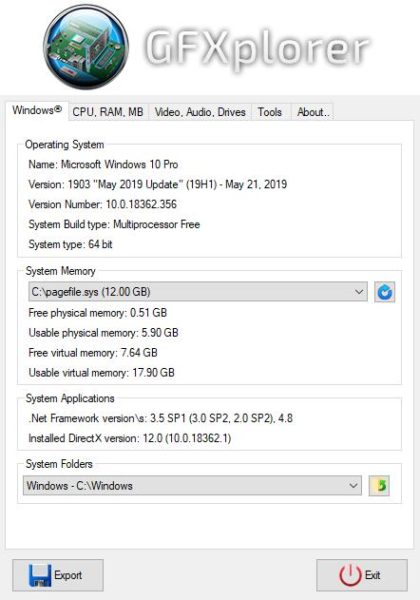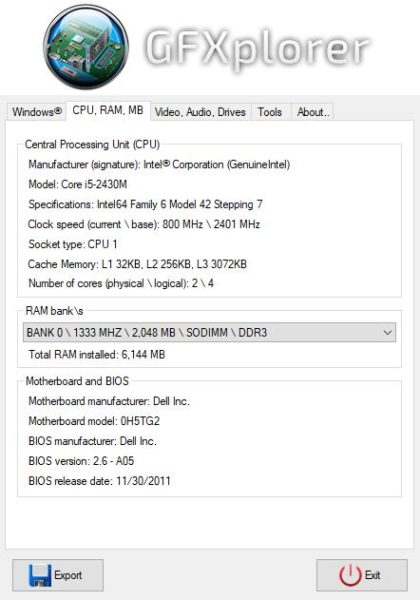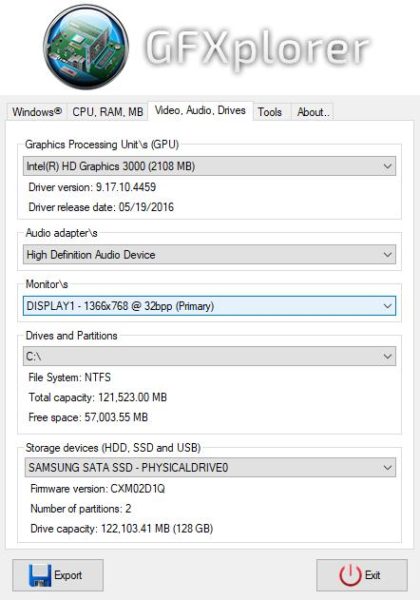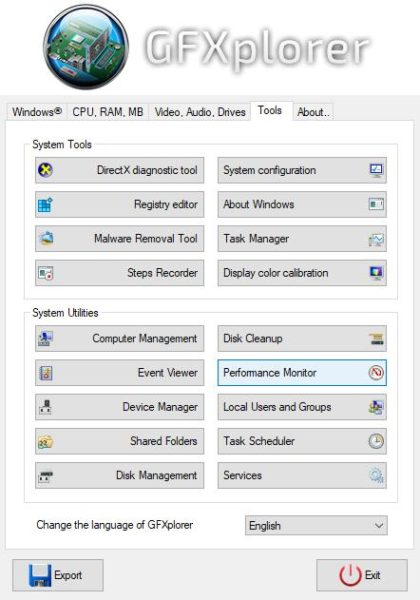One of the best tools for viewing technical details & hardware specifications on your Windows computer, is GFXplorer. We like it because it shows a lot of information at the forefront of the tool. Also, the user interface is pretty simple to understand, which is good. Bear in mind that there is nothing much users can do with the information provided here. The only option from our point of view is to look at stuff and then export information in plain or rich texts. Yes, it gives the user access to many tools, but they are just shortcutted links to things already available on Windows 11/10 anyway.
GFXplorer lists hardware information of your PC
Using this tool is super easy since everything you need is right there at the forefront. No complications whatsoever, and that’s one of the reasons why we recommend it. The information is divided into four tabs:
- Windows
- CPU, RAM, MB
- Video, Audio, Drives
- Tools.
1] Windows

Alright then, so the first tab is called Windows, and it sets out to highlight much of the information you may want to know. You can read data about the operating system, system memory, and system folders. There’s quite a lot available there for reading, so prepare yourself.
It’s not too overwhelming, however, so we expect anyone to be able to dig in and collect all the data they need in a timely manner.
2] CPU, RAM, MB

If you’re looking to gain information about the Central Processing Unit (CPU), then this is the tab you’ll need to click on. It will lay out the speed, the manufacturer, the version of the CPU, and much more. Not everyone tends to know exactly what’s under the hood of their computer, therefore, this section is a blessing.
For those who need data about the RAM, Motherboard, and BIOS, just look below the CPU section for all that is required.
Read: MiTeC System Information X provides hardware configuration about your computer
3] Video, Audio, Drives

Pretty self-explanatory, isn’t it? We believe it is. OK, so this section is all about showing information regarding the graphics card, audio adapter, and the hard drive(s). It could also show the type of monitor along with the resolution it supports.
4] Tools

OK, so we spoke a little bit about this section up above, and our point still stands. It doesn’t bring anything new, but what it does, in truth, is to make these important tools easily accessible. Usually, one would be required to go through a few hoops to get to them, but not here.
Here, the user will find System Tools, and System Utilities, all of which come with the ability to make big changes to your Windows computer system.
GFXplorer provides many technical details, which is exactly what we were looking for. You can download the tool right now from the official website.
Read next: Where to find computer hardware specs in Windows 11?